As people age, managing medications becomes more complex. Data from the Centers for Disease Control and Prevention (CDC) shows that nearly 70% of U.S. adults aged 40–79 take at least one prescription medication, while about 22% use five or more. Many older adults take several prescriptions every day, often from different providers. Each drug may serve an important purpose — but when taken together, they can easily cause confusion, missed doses, or dangerous interactions. Medication errors in older patients aren’t just statistics — they’re a real and growing concern for healthcare providers. The good news? Most are preventable with the right training, awareness, and systems in place.
Let’s look at the most common mistakes, why they happen, and how healthcare teams can stop them before they cause harm.
Why Older Adults Are at Higher Risk for Medication Errors

Older adults are more vulnerable to medication errors for several reasons:
- Multiple prescriptions: It’s common for seniors to take several medications for chronic conditions like diabetes, high blood pressure, or arthritis. The more medications a person takes, the higher the chance of mix-ups or interactions.
- Cognitive changes: Memory loss or confusion can make it difficult to follow complex medication schedules.
- Physical limitations: Arthritis, poor eyesight, or trouble opening pill bottles can cause patients to take the wrong dose or skip doses.
- Communication gaps: Different doctors or pharmacies might not always share information, leading to duplicate or conflicting prescriptions.
Medication-related problems are one of the most common causes of preventable harm among older adults. When prescriptions aren’t managed carefully, they can lead to confusion, adverse reactions, or even hospitalization.
That’s why effective medication management for older adults isn’t just a routine task — it’s a vital part of patient safety and quality care.
6 Most Common Medication Errors
-
Wrong Dosage
This is one of the most frequent and dangerous medication errors. Doses that are too high can cause side effects, while doses that are too low may not treat the condition effectively.
Older adults often process medications more slowly because of age-related changes in kidney and liver function. A dose that’s safe for a younger patient might be too strong for someone in their 70s or 80s.
How to prevent it:
-
Always start with the lowest effective dose and adjust as needed.
-
Use clear labeling and larger print on medication containers.
-
Encourage regular medication reviews to ensure dosages remain appropriate.
-
-
Duplicate Medications
Sometimes a patient receives two prescriptions for the same drug under different brand names or from different providers. This duplication can lead to accidental overdosing — one of the most common yet preventable medication errors among older adults.
Example: An older patient may be prescribed acetaminophen for pain by one doctor and a cough syrup containing acetaminophen by another — unknowingly taking a double dose.
How to prevent it:
-
Encourage patients to maintain an up-to-date medication list and bring it to every appointment.
-
Use electronic health records to flag potential duplicates.
-
Educate staff and patients about common brand-name and generic equivalents.
-
-
Drug Interactions
With multiple prescriptions, supplements, and over-the-counter drugs in the mix, harmful interactions are common. Some medications may cancel each other out or amplify side effects, creating dangerous situations that lead to medication errors and avoidable hospitalizations.
Example: A blood thinner and certain antibiotics can combine to increase bleeding risk.
How to prevent it:
-
Train staff to always check for interactions before adding or changing medications.
-
Ask patients about herbal supplements, vitamins, and over-the-counter products — not just prescriptions.
-
Encourage open communication between physicians, pharmacists, and nurses.
-
-
Incorrect Timing or Missed Doses
Many medications must be taken at specific times of day or with food to work properly. Older adults who manage complex schedules may forget doses or take them at the wrong times.
How to prevent it:
-
Simplify medication schedules whenever possible.
-
Recommend daily pill organizers or automated dispensers.
-
In assisted living or home care, train staff to document each administration clearly.
-
-
Improper Storage
Heat, moisture, and light can degrade certain medications. For example, insulin must stay refrigerated, and nitroglycerin tablets lose potency if stored in warm or humid conditions.
How to prevent it:
-
Educate patients and caregivers about proper storage temperatures.
-
Label containers clearly with storage instructions.
-
Regularly check expiration dates during medication reviews.
-
-
Failure to Communicate Medication Changes
When medications are added, stopped, or replaced, everyone involved — patients, caregivers, nurses, and prescribers — needs to know.
Miscommunication can lead to double dosing or skipped treatments.
How to prevent it:
-
Use clear written instructions for every change.
-
Conduct “teach-back” conversations to ensure patients understand updates.
-
Train staff to update charts immediately after medication adjustments.
-
The Power of Education and Training
Even the best systems can’t replace well-trained, observant healthcare staff. Medication management training empowers personnel to recognize risks early and act quickly.
Here’s what effective training should include:
- Medication administration basics: Reinforce the “Five Rights” — the right patient, right medication, right dose, right time, and right route.
- Recognizing high-risk medications: Staff should know which drugs (like anticoagulants, opioids, and insulin) require extra caution.
- Identifying red flags: Drowsiness, confusion, or sudden changes in blood pressure can signal medication problems.
- Documentation and reporting: Proper documentation ensures accountability and continuity of care.
- Resident and family education: Teaching patients and caregivers builds trust and compliance.
Regular training refreshers not only reduce medication errors but also strengthen confidence among healthcare teams.
The Role of Team Communication
Medication safety is a team effort. Every person who interacts with a patient — from prescribers to pharmacists to nursing assistants — plays a role in preventing medication errors.
To improve coordination:
- Encourage open communication between all care providers.
- Hold brief daily or weekly medication review meetings in long-term care settings.
- Use standardized forms and checklists for consistency.
- Promote a “no blame” culture where staff feel comfortable reporting near-misses or potential issues.
When everyone works together, small improvements add up to major safety gains.
Using Technology to Prevent Medication Errors
Technology can make medication management safer and simpler:
- Electronic prescribing reduces handwriting errors and duplication.
- Barcode scanning systems verify the right patient, medication, and dosage.
- Electronic health records (EHRs) help track all prescriptions across providers.
- Automated alerts flag potential drug interactions or allergy conflicts.
Training staff to use these tools correctly ensures technology enhances — rather than complicates — patient safety.
The Human Side of Medication Management

Behind every prescription is a person who trusts their care team to keep them safe. Older adults often rely completely on healthcare providers to manage their medications. When providers slow down, communicate clearly, and pay attention to detail, patients feel secure — and mistakes drop dramatically.
Medication safety isn’t just about compliance or avoiding penalties. It’s about compassion, trust, and protecting the people who have spent a lifetime caring for others.
Key Takeaways
- Older adults face higher risks for medication errors due to multiple prescriptions and communication gaps.
- The most common mistakes include wrong doses, duplicate medications, drug interactions, and missed timing.
- Prevention starts with education, teamwork, and clear communication.
- Regular medication reviews, technology use, and proper training can significantly reduce risks.
- When healthcare providers stay proactive, they protect patients, strengthen compliance, and build a culture of safety.
Partner with American Medical Compliance — Empower Your Team to Prevent Medication Errors and Deliver Safer Care
Ensuring compliance isn’t just about meeting standards — it’s about protecting patients, empowering staff, and building lasting trust. At American Medical Compliance, we help healthcare providers strengthen medication safety through expert-led training that boosts efficiency and confidence across your entire team. Our customized, free course development program lets you tailor learning modules to your facility’s needs — so every staff member is prepared to prevent medication errors, stay compliant, and deliver consistent, high-quality care. Enroll your team today and create a safer, more efficient care environment with American Medical Compliance. Click here.



